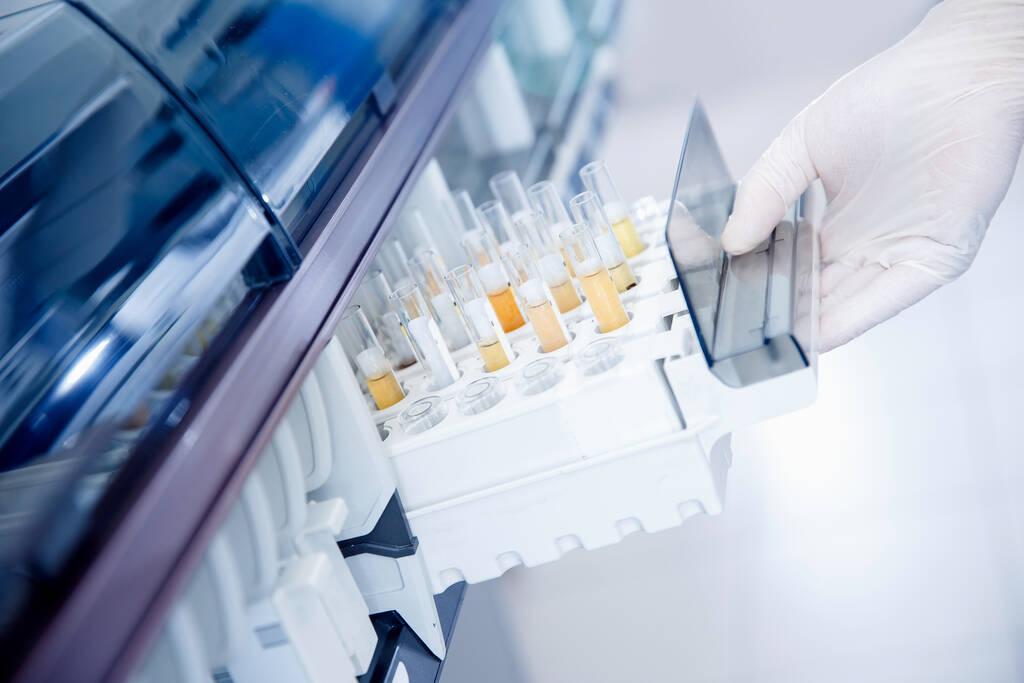Importance Of Urinalysis Devices In Clinical Practice
The world of modern healthcare is filled with complex technologies and devices, each playing a critical role in diagnosing and managing a broad range of diseases. Amid this plethora of medical technology, urinalysis devices stand out as an essential diagnostic tool, due to their simplicity and the wealth of information they can provide. Urinalysis – the testing of urine – involves several examinations used to detect and measure various compounds that pass through the urine. As such, urinalysis can offer invaluable insights into the physiological processes of the body, as well as the state of the kidneys, urinary system, and other organ systems. This article will delve into the importance of urinalysis devices in clinical practice, exploring their diverse applications in detecting and monitoring various health conditions.
-11-1024x576.jpg)
What Are The Test Items Of The Urine Analyzer?
1.8-11 screening combination urine test strips that are mainly used for newly diagnosed patients and health checks. Among them, 8 test items include protein, glucose, pH, ketone bodies, bilirubin, urobilinogen, red blood cells (occult blood) and nitrite; 9 test items add urine white blood cell test in addition to the above 8 tests. On the basis of 9 of the 10 urine analyzer testing items, the urine specific density test was added. 11 test items have added vitamin C checks.
2.It is mainly used for curative effect observation of diagnosed diseases. For example, patients with kidney disease can use PH, protein, and occult blood (red blood cell) combination test strips; diabetic patients can use PH, sugar, and ketone body combination test strips; Urobilinogen combination test strip.
-11-1024x681.jpg)
What Diseases Can Be Diagnosed With A Urine Analyzer?
1. Urobilinogen (URO): Use aldehyde reaction method or diazo reaction method. It is mainly used for the diagnosis and treatment of digestive system and biliary tract diseases. Normal people have a positive reaction, and the urine is negative after being diluted more than 20 times. Negative urobilinogen is common in complete obstructive jaundice. Increased urobilinogen is common in hemolytic diseases and liver parenchymal lesions, such as hepatitis.
2. Urinary bilirubin (BIL): using the azo reaction method. It is mainly used for the diagnosis and treatment of digestive system and biliary tract diseases. Bilirubin can appear in urine when there is substantial liver damage or obstructive jaundice.
3. Urine ketone body (KET): use the sodium nitrosoferricyanide method. It is mainly used for the diagnosis and treatment of glucose metabolism disorders, incomplete fat oxidation and other related diseases. Ketone bodies can be strongly positive in patients with severe diabetic ketoacidosis. Hyperemesis gravidarum, long-term hunger, malnutrition, and strenuous exercise can be positive.

4. Urinary occult blood (BLD): using the hemoglobin-like peroxidase method, the depth of the color is directly proportional to the content of hemoglobin. It is mainly used for the diagnosis and treatment of kidney and urinary system. Positive more common in hematuria, hemoglobinuria and acute glomerulonephritis.
5. Urine protein (PRO): PH indicator protein error method is used. Urine protein detection is mainly used for the diagnosis, treatment and prognosis of kidney disease and other related diseases. Positive results are more common in pathological proteinuria, nephritis, nephrotic syndrome and pyelonephritis.
6. Urinary nitrite (NIT): use nitrate reduction method. Mainly used for rapid screening of urinary tract infections, such as Escherichia coli, Klebsiella, Proteus and Pseudomonas infection.
7. Glucose in urine (GLU): use glucose oxidase-peroxidase method. Urine glucose testing is suitable for people who are unwilling or unsuitable for blood sugar testing. Mainly used for diabetes, renal diabetes and hyperthyroidism. Oral administration or injection of a large amount of glucose and mental agitation can also lead to positive urine sugar.

8. Urine PH: Use the acid-base indicator method. It is mainly used to understand the acid-base balance in the body and monitor the clinical medication of patients with urinary system. Meat eaters are mostly acidic, while eating vegetables and fruits can be alkaline. Long-term putrefaction urine or urinary tract infection, pyuria is alkaline. Phosphate and carbonate crystals can be seen in alkaline urine. Urate, oxalate, and cystine crystals are more common in acidic urine. Acidosis and acidic drugs such as ammonium chloride can be acidic.
9. Leukocytes in urine (LEU): use leukocyte esterase method. It is mainly used for the diagnosis and treatment of kidney, urinary tract diseases and other related diseases. The dry chemical method uses the neutrophil esterase method. Positive results suggest urinary tract inflammation, such as renal or lower urinary tract inflammation, including pyelonephritis, cystitis, urethritis, and prostatitis, indicating that the number of white blood cells in the urine is > 20 per microliter.
10. Urine specific gravity (SG): Polyelectrolyte ion dissociation method is used. Oliguria and increased specific density are seen in acute nephritis, high fever, cardiac insufficiency, etc.; increased urine output and increased specific density are common in diabetes. Reduced specific density: chronic glomerulonephritis, renal insufficiency, diabetes insipidus, etc. Chronic renal insufficiency presents persistent low-specific dense urine.
11.Vitamin C: use the reduction method. It is used to indicate whether the urine invisible, bilirubin, nitrite and glucose test results are accurate, and to prevent false negative results of the above items.

Conclusion
Urinalysis devices, with their ability to detect and measure a range of parameters, are an indispensable tool in clinical diagnostics. The results obtained from these devices not only assist in diagnosing a multitude of diseases but also offer insights into a patient’s overall health, making them an invaluable resource in healthcare.
Why Choose Us?

CNMEDITECH is dedicated to the long-term research of the urine analyzer market. Our mission is “People oriented and win-win strategy,Matching the real needs of the region with a focus on human health,To be the world’s first-class medical field solution expert”. We have been manufacturing high-quality medical device products for more than ten years.
We have built our reputation on delivering quality healthcare solutions on time and on budget. All our products comply with international health and safety regulations and all products come with a warranty.
Are you still worrying about your customer’s product needs? Are you still angry that the product is expensive?Our urine analyzers have various models and support personalized product customization.
Our company has many styles to choose from. In addition, we have high-quality pre-sales consulting guidance and professional after-sales service, all to meet your needs.
Whether it is a cost-effective or high-end product, there will always be something suitable for you. If you have any needs for products, you can ask us, our factory will meet your needs as soon as possible, and we will make every effort to provide you with solutions.Feel free to send us your inquiries.
